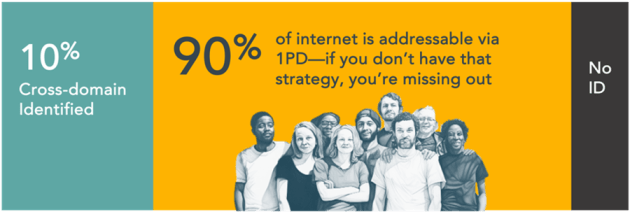
Thomas D. E. Cox, Amelia L. Tang, & Felicity J. Bigelow at Neuro-Insight
The Women’s World Cup captivated the heart and interest of the nation. As the Matildas' set their sights on their next challenge, the industry looks ahead to the Olympic Games.
As the largest sporting event in the world, the Olympic Games provide brands with an opportunity to reach consumers. However, for brands to be successful, they must understand the heightened emotional state of mind that is elicited by the Olympic Games.
To help understand this consumer state of mind, Neuro-Insight (has captured various insights over the past four Olympics) & sought to measure how the brain processes information within the Olympic context. Our data showed that Olympic content produced greater levels of personal interest and emotion in viewers. On average, Summer Olympics content had 10% greater emotional intensity and 6% higher levels of engagement compared to prime-time television shows. Most interestingly, advertisers that creatively tap into this state of mind, known as the ‘neuro-state', stood to benefit from a 25% increase in effectiveness. This means that whilst the Olympic Games elicits a unique state of mind in consumers, advertisers can strategically align with this context to amplify their association.
Focusing on engagement and emotional intensity, Neuro-Insight showed heightened brain activity during moments where brands incorporated Olympic elements during their creative.
Results
Neuro-Insight explored two ways that brands can leverage the unique opportunity that comes with Olympic Games sponsorship.
- Environment Congruence is King
Brands strengthened the impact of their campaign by tapping into the context of the Olympic Games. Interestingly, this context was achieved through the integration of sport themes, such as a swimming pool, and extending congruency to creative elements in the campaign, such as slow motion (as seen in Olympic replays). As a result, brands were able establish stronger emotional connections with their audience.
As shown below in Figure 1, viewers that watched a 30s creative during an Olympic Games program (In Context) recorded stronger levels of emotional intensity when compared to the same creative aired during a typical primetime program (Out of Context). Crucially, this was evident during final branding (highlighted in green), with In Context creative performing 66% stronger than Out of Context creative. This means that consumers tended to experience a stronger peak in emotional connection with the brand when the environment was congruent.
Figure 1 - Context and Emotional Intensity
- Leveraging Sport Mindset Through Olympic Talent
Brands strengthened the relevance of their campaign by incorporating Olympic talent within their creative. Through utilising famous sporting talent, such as the universally recognised Usain Bolt, brands were able to capitalise on the highly engaging nature of the Olympic Games.
As shown below in Figure 2, average levels of personal relevance were stronger for In Context talent when compared to Out of Context talent. This means that viewers tended to experience a sustained high level of interest throughout the creative when Olympic talent was used for a campaign aired In Context. Importantly, average levels of engagement during In Context final branding (highlighted below in green) were elevated by 37% when compared to Out of Context. This indicates that the strong levels of personal relevance sustained using Olympic talent were extended into final branding. Whilst not all athletes are as easily recognised as Usain Bolt, brands capable of effectively incorporating talent stand to strengthen their relevance and importance with viewers.
Together, the use of Olympic talent In Context elicited stronger sustained engagement throughout the creative, and, crucially during final branding.
Figure 2 - Talent and Engagement
Interestingly, these findings were sustained when talent were presented outside of an explicit Olympic environment (such as talent browsing social media). This means that brands can benefit from the relevance of Olympic talent without requiring explicit Olympic imagery, thus enabling greater creative license.
Neuro-Insight’s investigation demonstrates that consumers experience heightened states of emotion and personal relevance while watching sport. Additionally, advertising creative itself can benefit from a boost in effectiveness (long-term memory encoding) by adopting the same neurostate of the Olympics program environment. By incorporating sporting themes brands can tap into this powerful state of mind.
Together these findings afford brands the opportunity to deliver greater levels of emotion and engagement during pivotal campaign moments, offering a distinct advantage over competitors.
In a sporting spectacle where talent, determination, inspiration, and achievement are at their highest, we have seen a range of factors that can combine to creative a lasting impression with consumers. How can your brand effectively tap into this success?




